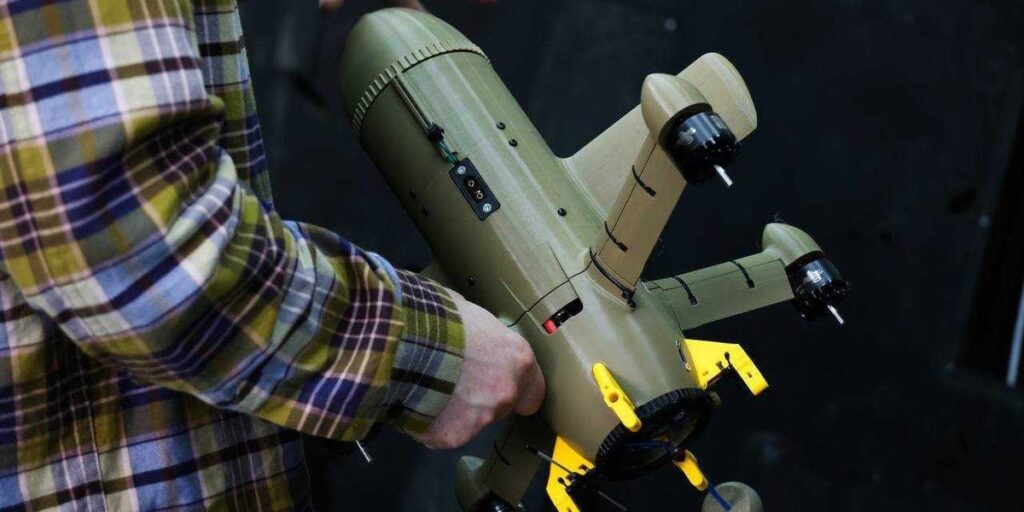The Ukrainian firm Wild Hornets said its Sting interceptor reached up to 195 miles per hour in stable flight — a speed that likely makes the system one of the fastest first-person-view combat drones.
The startup released a video on Monday of the Sting flying over open fields in an apparent test. A speed counter on the drone’s first-person-view user interface indicated that the Sting reached up to 315 km per hour, or roughly the top velocity of a standard bullet train.
Business Insider could not independently verify the drone’s speed.
The announcement comes as the Ukrainian drone industry has been trying for months to push the limits of its FPV interceptors.
Ukrainian units are increasingly looking to these low-cost drones, once a novel concept on the battlefield, as a solution against the Iranian-designed Shahed.
Russia, which manufactures the Shahed locally, has drastically increased the number of these exploding drones it deploys at a time, pairing them with ballistic missiles to overwhelm Ukrainian air defenses.
New Russian tactics that allow Shaheds to fly higher and faster have also made it more difficult for machine gun squads, a core pillar of air defense for Ukraine, to hit the loitering munitions reliably.
An interceptor drone’s speed is key because the uncrewed system must be fast enough to catch up to the Shahed. The Shahed-136, the standard loitering munition used in Russia’s drone waves, flies at about 115 miles per hour.
When reports first emerged of the Sting’s existence in the fall of 2024, the drone’s baseline was to fly faster than 100 miles per hour.
With Monday’s video announcement, it has now been recorded notching nearly double that speed.
One of the industry’s rising stars, the Sting is being deployed in active combat, though it’s unclear at what scale.
The Wild Hornets have said that one interceptor costs $2,500 and that Ukrainian pilots have already used the Sting to destroy roughly 100 Shahed drones.
That’s still a small contribution against the total volume of Moscow’s drone attacks; Russia launched over 6,000 Shaheds and decoys in July alone.
But Ukraine hopes interceptor drones will soon shore up the gap in its air defenses. Ukrainian President Volodymyr Zelenskyy has announced a goal for the country to build 1,000 interceptor drones daily.
Kyiv’s forces generally report shooting down or disabling between 86 to 89% of Russia’s Shaheds, meaning that several hundred still get through a month. The reported interception and disabling rate was 82% in May.
Russia, meanwhile, has been pushing drone technology of its own. It’s been reported to be testing and deploying jet-powered versions of the Shahed, which is believed to be modeled after an improved Iranian design that can fly up to 500 miles per hour.
Read the full article here















